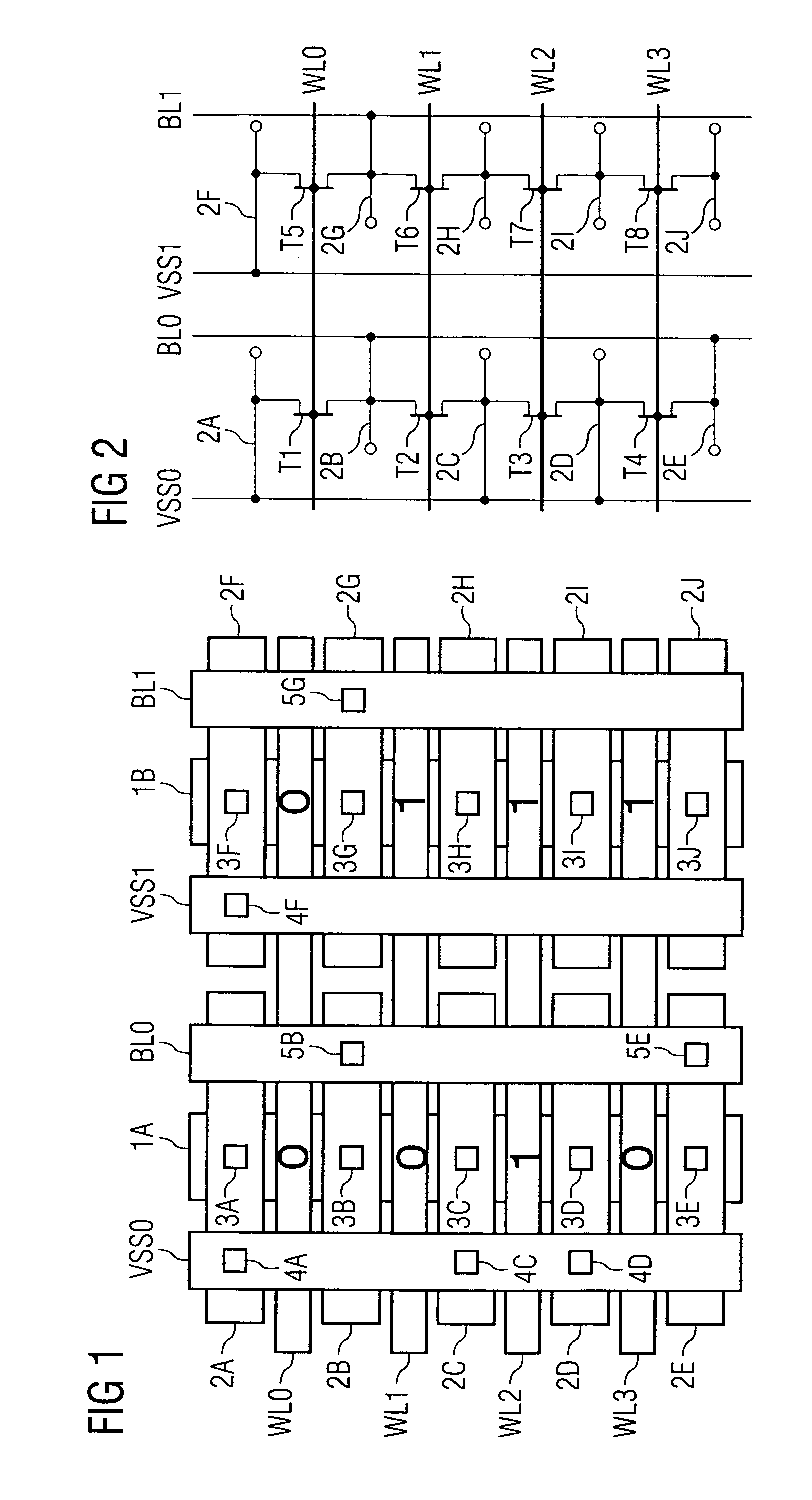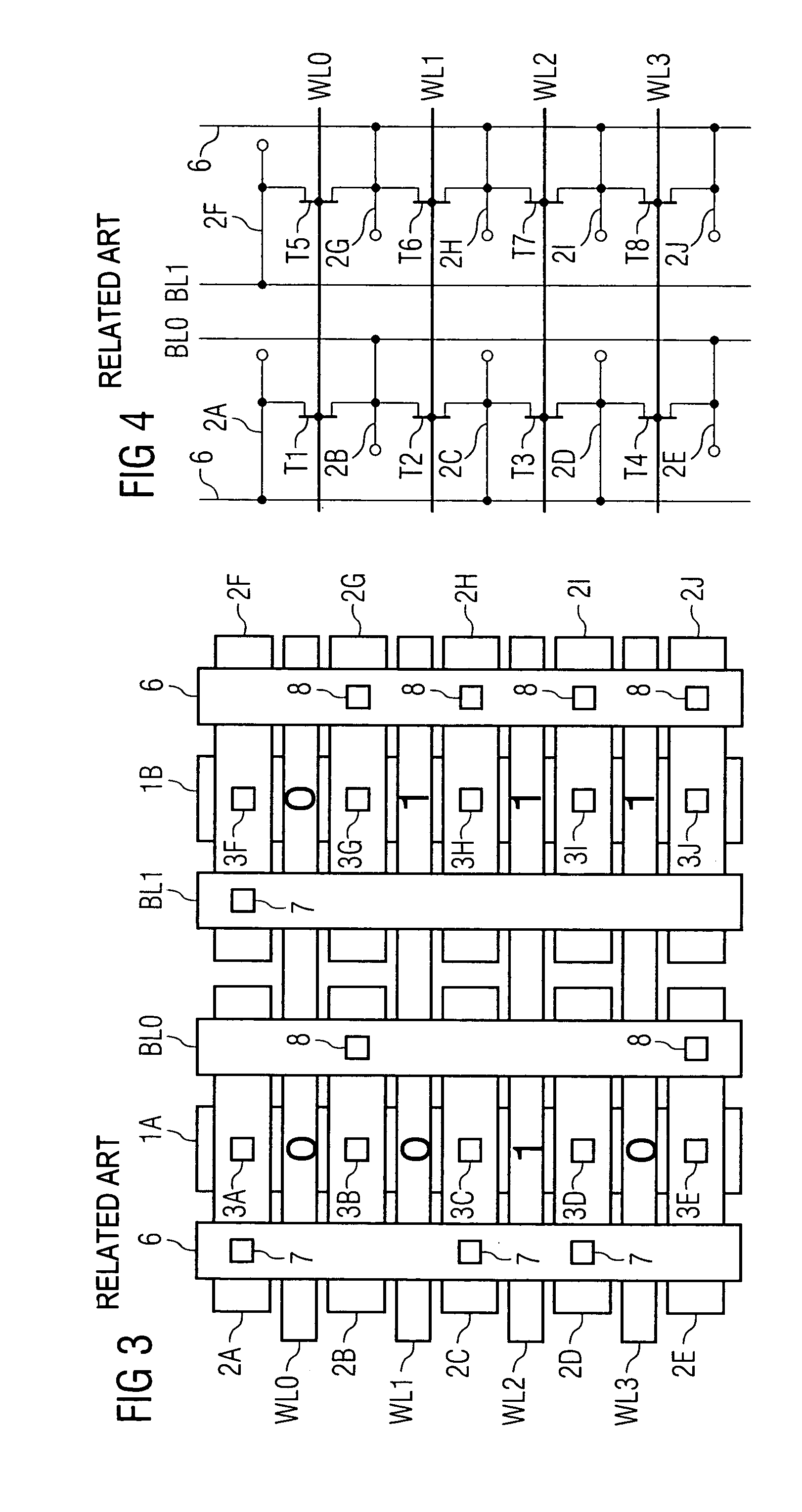Method for programming a memory arrangement and programmed memory arrangement
a memory arrangement and programming method technology, applied in the direction of digital storage, electrical appliances, instruments, etc., to achieve the effect of avoiding crosstalk between bit lines
- Summary
- Abstract
- Description
- Claims
- Application Information
AI Technical Summary
Benefits of technology
Problems solved by technology
Method used
Image
Examples
Embodiment Construction
[0031]FIG. 1 shows a layout of a read-only memory or ROM embodiment of the present invention. FIG. 2 shows a corresponding circuit diagram. In FIGS. 1 and 2, similar reference labels are used to indicate similar components as those shown in FIGS. 3 and 4.
[0032]The ROM shown in FIGS. 1 and 2 comprises eight memory cells, which are arranged in two columns of four memory cells each and are formed by transistors T1–T8 as shown in the circuit diagram of FIG. 2. Naturally, ROMs used in practice contain considerably more of such memory cells, which can be arranged in more columns and rows and optionally also over one another in several layers.
[0033]The transistors T1–T8 from FIG. 2 are field-effect transistors in the embodiment shown, but in principle the use of other transistor types is also conceivable. The gate terminals of the transistors T1–T8 are connected to address lines WL0–WL3 as shown in FIG. 2; that is, two transistors are assigned one address line in each case. The source and ...
PUM
 Login to View More
Login to View More Abstract
Description
Claims
Application Information
 Login to View More
Login to View More - R&D
- Intellectual Property
- Life Sciences
- Materials
- Tech Scout
- Unparalleled Data Quality
- Higher Quality Content
- 60% Fewer Hallucinations
Browse by: Latest US Patents, China's latest patents, Technical Efficacy Thesaurus, Application Domain, Technology Topic, Popular Technical Reports.
© 2025 PatSnap. All rights reserved.Legal|Privacy policy|Modern Slavery Act Transparency Statement|Sitemap|About US| Contact US: help@patsnap.com



